Must-Know Furniture: The Wingback Chair
http://decor-ideas.org 01/01/2015 21:46 Decor Ideas
The wingback chair, also known as a wing chair, an easy chair and a grandfather chair, is a late-17th-century piece designed with side wings, also called cheeks. Traditionally ending at the arm, the wings partially enclose the sitter’s upper body to protect the sitter from drafts and capture heat thrown from a fireplace. That’s why wingbacks are often found by the hearth. But don’t let the wingback’s traditional stereotype make you believe it belongs only in formal spaces. With a design that’s lasted four centuries, wingback chairs are surprisingly flexible. They’re a great addition not only to a living room or study, but also to a dining room, bedroom and more. Here’s what to know about introducing a wingback into your own home.
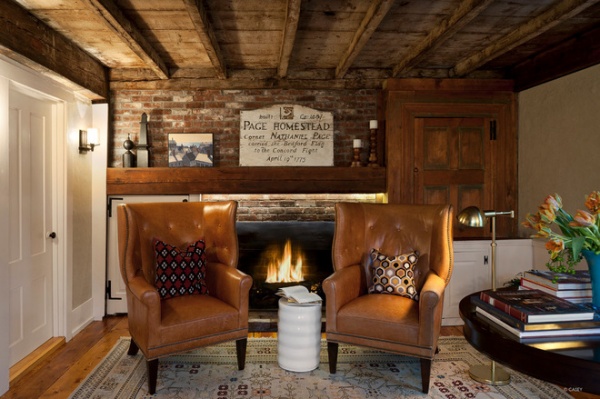
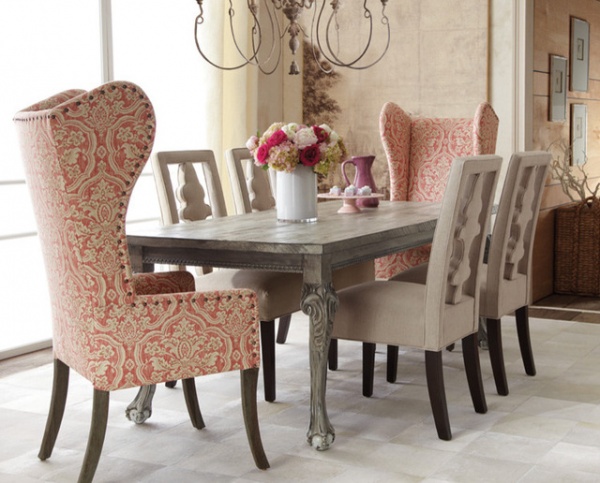
Dining Duos
A pair of wingback chairs at the ends of a table instead of armchairs mixes things up in a dining room.
If you’re combining wingback chairs with conventional side dining chairs, make sure the shapes work together. I like this grouping because the side chair backs are cut out and have a lightness in their shape compared with the more solid wingback chairs. Solid backs on the side chairs might be be too bulky in a combo like this. Also be careful that the side chairs don’t rival the wingbacks by having too-high backs.
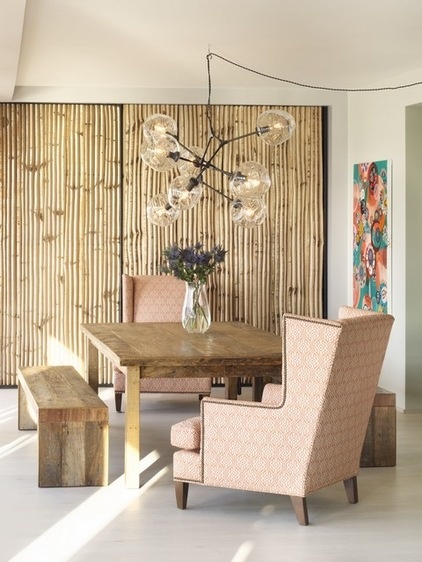
Here a pair of wingbacks with a contemporary shape looks fabulous with side benches.
Wingbacks may not be a great option for messier folks. A wingback is a bit heftier than your average dining chair and will require your putting your hands on the upholstered armrests to scoot up to and away from the table. Make sure your upholstery fabric choice is durable. You’ll probably want to apply a stain guard.
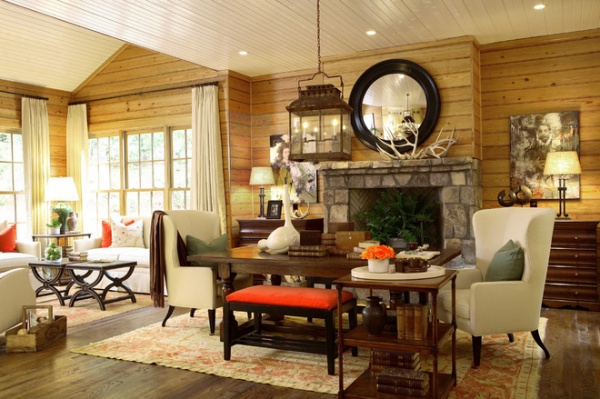
If you’re considering wingbacks at the table, make sure the arms of the chairs clear the bottom of your tabletop, as shown here. Otherwise the sitter will be banging into the table — and you’ll ruin both your chairs and your table. People also will be dining while teetering on the front edge of the seat.
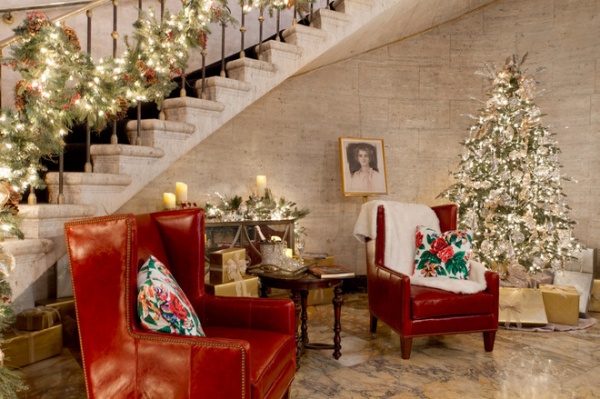
Festive Foyer
Empty space at the base of a foyer staircase is usually awkward and difficult to furnish. However, a handsome duo of wingback chairs does the trick without being overly heavy or fussy. They also create a useful place to be in view of the door while someone is waiting for a friend or a ride to the airport.
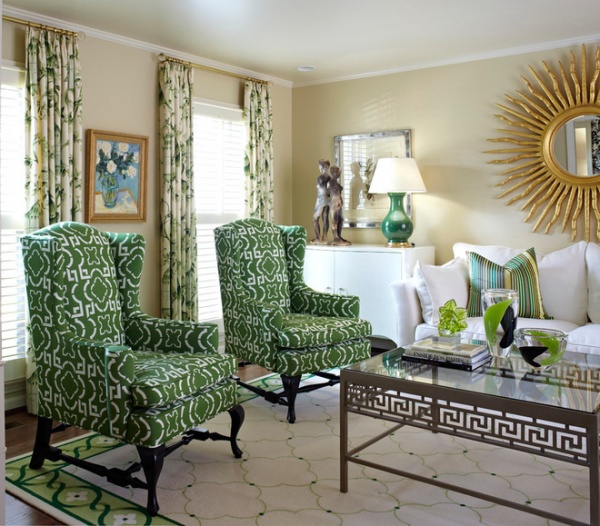
Chair Pairs
Wingback chairs look great in pairs. Because their sinuous shape is so sculptural, they almost beg to be balanced in a room with a soulmate.
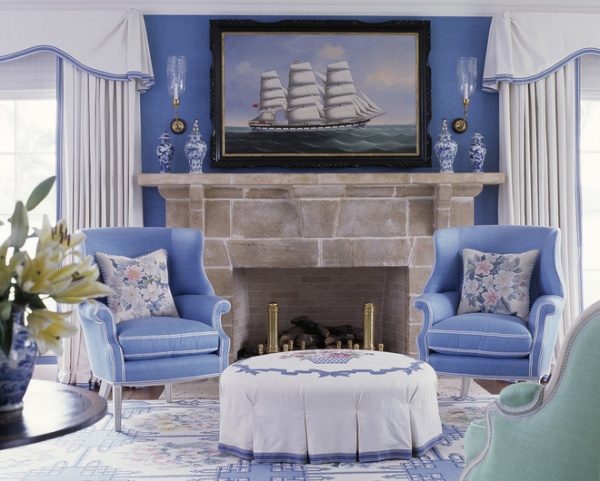
There are three ways of pairing wingbacks. The first is placing them side by side with space between them to accommodate a fireplace, as seen here, or a side table.
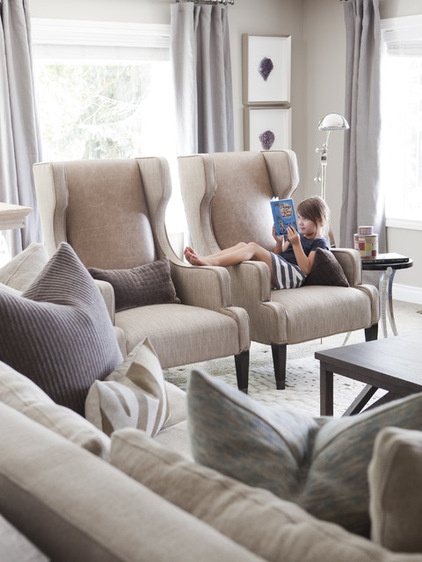
Or they can be placed side by side with no space between, as in this living room. While this scenario replaces a love seat or sofa, it offers much more in terms of style and visual movement compared with a coordinating second sofa.
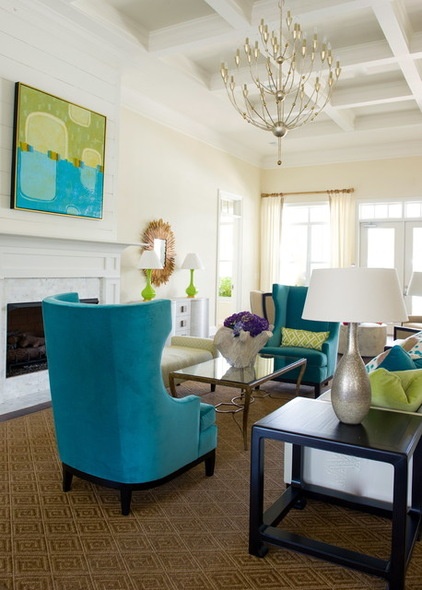
Another way of coupling wingbacks is facing them opposite a coffee table, as in this living room.
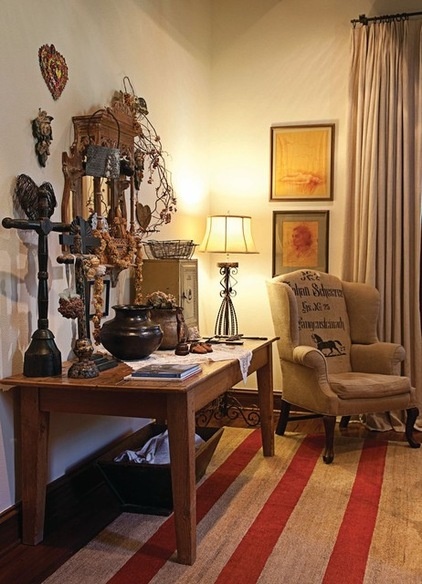
Solo Seat
Though wingback chairs look super in pairs, they also work well on their own. They’re often used to fill a corner, as in this example.
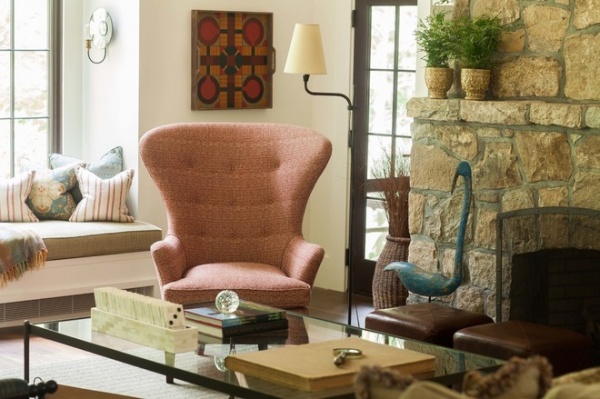
This more modern single wingback chair is planted opposite a sofa and a pair of spindle chairs. It balances the seating group.
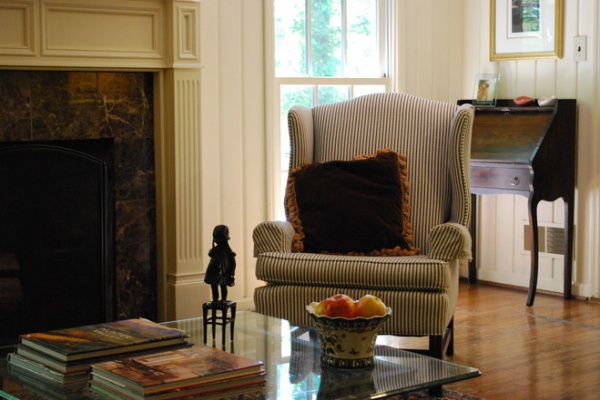
Styles
Traditional. When most people think of a wingback chair, a traditional chair is what usually comes to mind. The wings are typically curvilinear not only from a side view but oftentimes also from the front, as in this example. The wings of traditional designs terminate in a rolled arm. Legs are typically turned, straight or cabriole shaped.
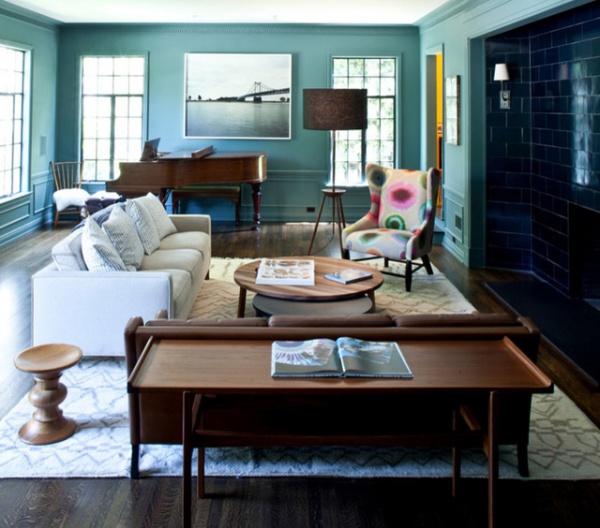
Just because you have a traditional wingback chair frame doesn’t mean you have to stick with the same aesthetic for your fabric selection. This one sports a traditional shape, but its beguiling upholstery is clearly modern.
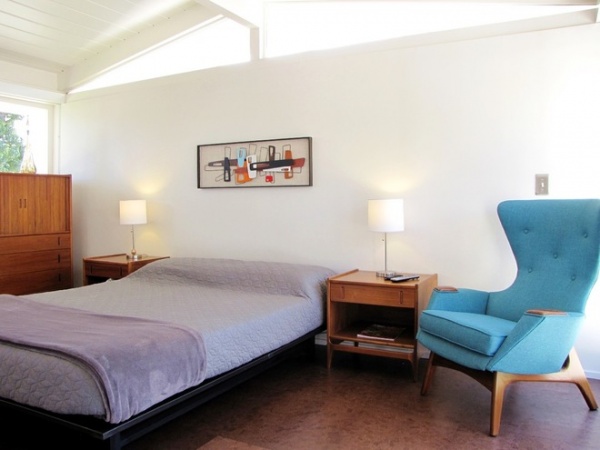
Midcentury modern. Wingback chairs gained popularity in the mid-20th century. More streamlined than earlier versions, the midcentury examples usually have wings that are completely open or partially broken away from the arms. The wings are also typically integrated with the seat back to create a unified piece.
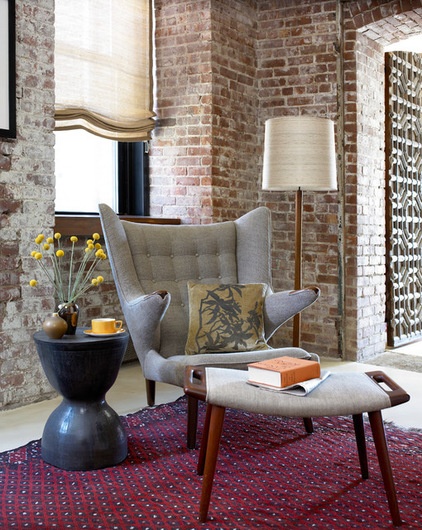
Midcentury wingback chairs are typically upholstered in solid-colored fabric to emphasize the lines, as in this Papa Bear Chair design by Hans J. Wegner.
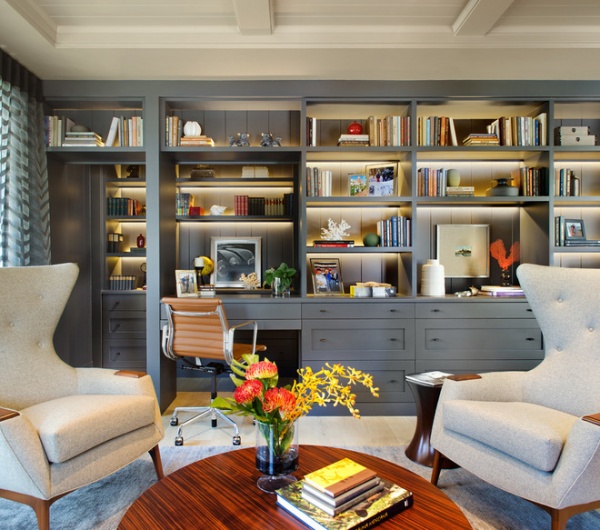
This study features a duo of midcentury modern wingback chairs designed by Adrian Pearsall.
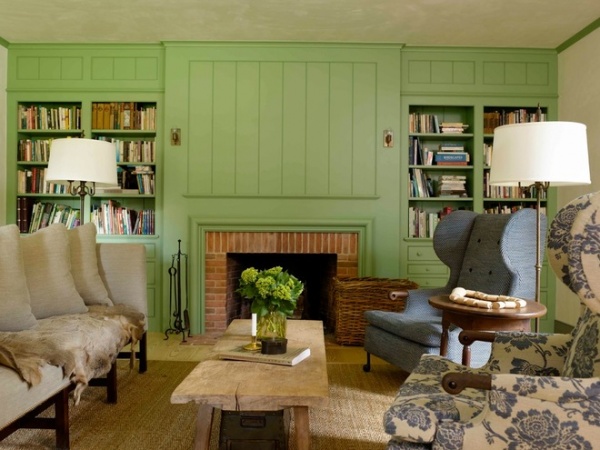
Transitional. These wingback chairs, made by BDDW, have blackened cast-bronze legs and arms and are a definite nod to the past. They can read as either traditional or contemporary depending on the fabric selection, as illustrated here with two different fabrics.
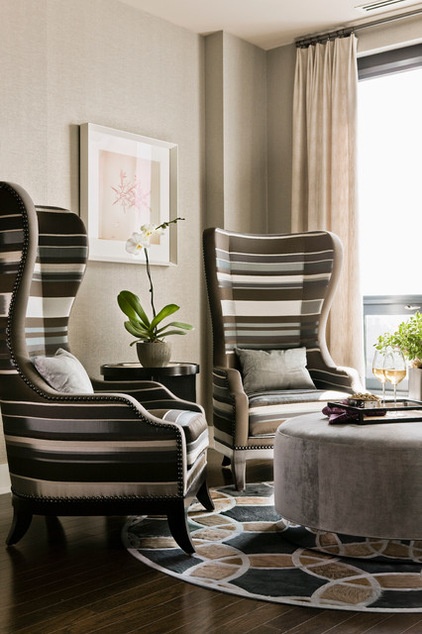
Contemporary. With their uberhigh backs, these contemporary takes on the wingback are the highlights of the room. Made by Ironies and called the Bauen Chair, they have bold horizontal stripes that make them even more striking.
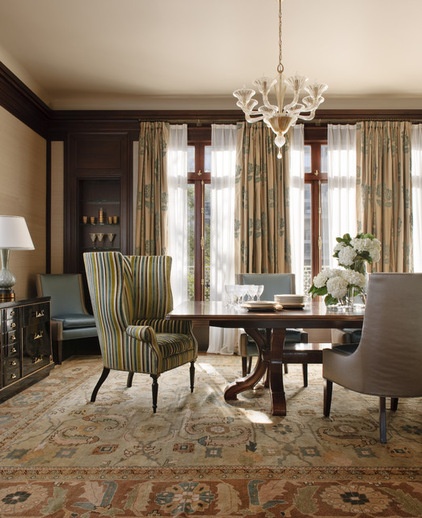
This Wainscott Wing Chair by Victoria Hagan has a unified seat back and wing that creates a near semicircle. Vertically striped upholstery shows off its voluminous shape.
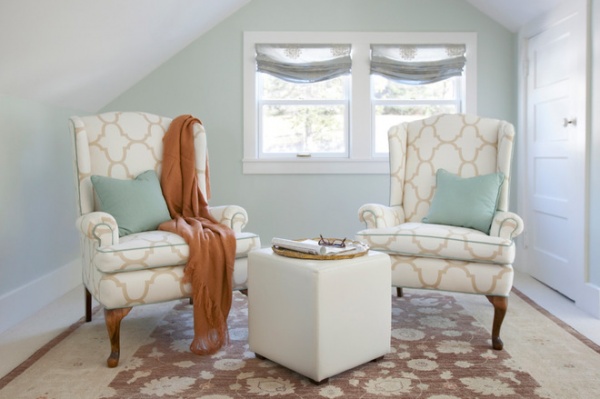
Fabric Considerations
As with any other upholstered piece, the amount of fabric required for a wingback chair will vary based on the fabric’s pattern repeat and width and the size of the chair. A good ballpark figure for an average chair is 6 to 9 yards.
Knit backing. Barbara Elza Hirsch of Elza B. Design designed the chairs shown here. She says she added a knit backing to the linen fabric prior to upholstering it so it would maintain a smooth, tailored look.
Knit backing normally is appropriate only for linens, silks and thinner cottons. Heavier cottons and woven fabrics, velvets and leathers are fine on their own.
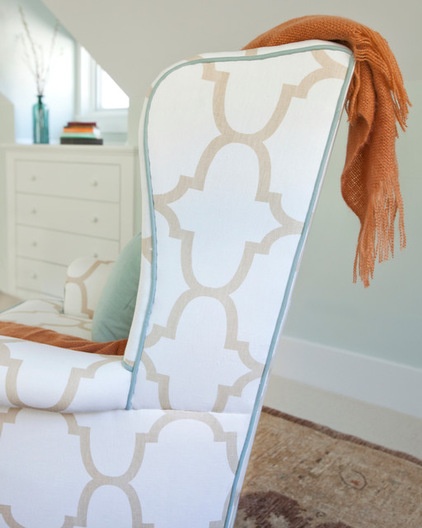
Contrasting piping. Wingback chairs, Hirsch says, are “endearing pieces, often family heirlooms that are frequently overlooked. I consider them to be very versatile and able to add a lot of personality to a room when upholstered in an updated, fun fabric with contrasted piping.”
She says that each chair for this project required 8 yards of fabric and 1 yard of piping. Note how the trellis pattern matches up nicely at each of the seams and is expertly balanced on the side of the chair.
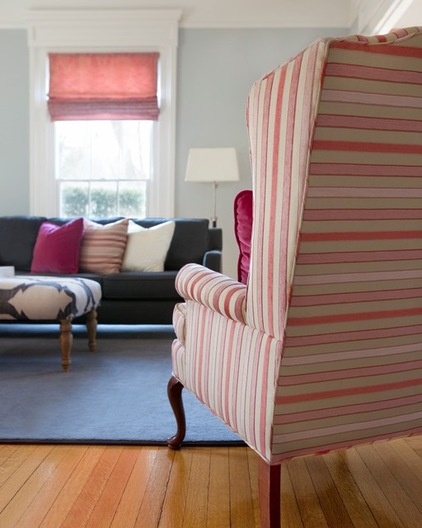
Fabric mixing. In addition to using contrasting piping, Hirsch says she also likes to run fabric in a reverse direction in back, as in her project shown here.
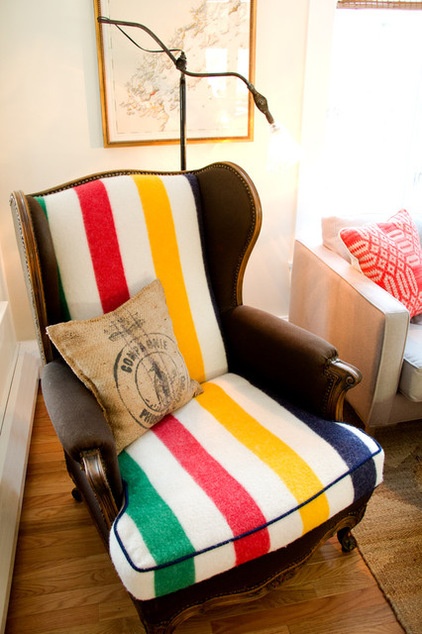
Here’s a great example of mixing two fabrics on a wingback chair. A beefy Hudson’s Bay Point Blanket has been combined with the olive-green wool fabric that designer Tyler Karu of Landing Design & Development says was already on the chair.
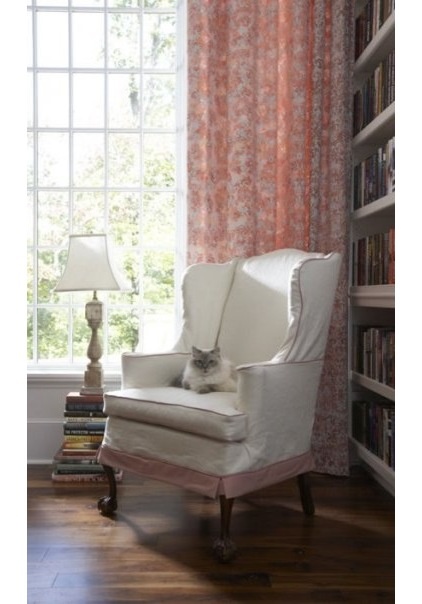
Slipcovers. If you’re hesitant about committing to a fabric or need to clean your wingback chairs more often, slipcovers are always a great option. (Just ask kitty here.) A contrasting piping in the slipcover accentuates the serpentine form of the chair underneath here, while a contrasting band at the bottom helps ground it.
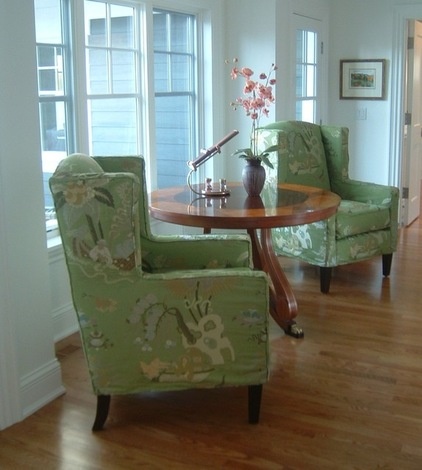
Slipcovers don’t have to be neutral colored. These dreamy green patterned wingback slipcovers are both fun and serene.
More: Must-Know Furniture: Get Close With a Tête-à-Tête
Related Articles Recommended












